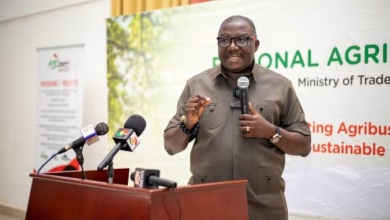Ghana’s cocoa production has reached a record low, with only 429,323 metric tons produced as of the end of June, according to data from the marketing board Cocobod. This represents less than 55% of the average seasonal output.
The disastrous harvests in Ghana and Ivory Coast, the world’s largest producer, have driven up global cocoa prices since the start of the year. The two countries account for around 60% of global supply.
Adverse weather conditions, tree disease, informal mining, and smuggling have all contributed to the decline in production. The Cocobod data does not capture production that may have been trafficked out of the country illegally.
The bulk of Ghana’s cocoa harvest is usually completed by the end of June, and the Cocobod data roughly reflects this season’s main crop output. The marketing board announced the start of Ghana’s light crop on June 21, which typically contributes less than 10% of the full season’s production.
Ghana’s annual cocoa output has averaged 800,000 tons over the last five seasons, according to International Cocoa Organization data. However, the Cocobod data reflects three successive seasons of decline.
The two leading cocoa-growing regions, Ashanti and Western South, have been the biggest contributors to the overall drop in production. Swollen shoot disease and artisanal gold mining are largely responsible for the drop in production in these regions.
Industry players and analysts have expressed skepticism about Cocobod’s target of bouncing back to over 800,000 tons in the next season, citing the ongoing challenges facing the industry.
In a statement, Nana Kwesi Barning, coordinator of the Ghana Civil Society Cocoa Platform, said, “Galamsey and CSSVD are massive in there, especially the galamsey, per our analysis.”
Nana Johnson Mensah Kagya, a major farmer in the Western South region, said over half of his cocoa had to be cut down and replanted due to swollen shoot. He also noted that illegal gold mining is drawing young men away from cocoa farming.
“Galamsey continues to exist, cocoa has no future. Because of the galamsey, you will not get anybody to work on the cocoa farm,” Kagya said.
